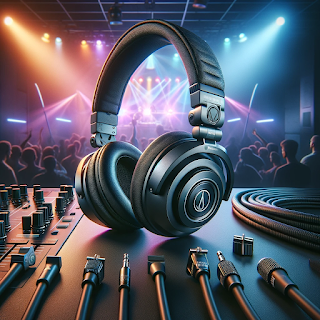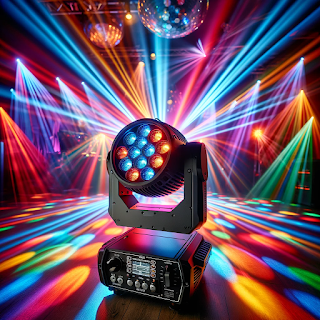Illuminating Rhythms: A Beginner's Guide to DJ Lighting and Visuals
In the vibrant world of DJing, music is undoubtedly the heartbeat of any event, but the role of lighting in creating an unforgettable atmosphere cannot be overstated. Just as a DJ orchestrates the flow of music to control the energy of a room, lighting too can elevate a performance into an immersive experience. This guide will explore the fundamentals of DJ lighting and visuals, providing you with the knowledge to illuminate your rhythms and captivate your audience.
**Understanding the Basics of DJ Lighting**
Lighting, much like music, is about rhythm and mood. The basic types of DJ lighting include:
- **Wash Lights**: These are used to bathe the dance floor or a wall in color. LED pars or bars are commonly used for this purpose and are essential for setting the base mood.
- **Intelligent Lighting**: Includes moving heads and scanners that can project beams of light across the room, often synchronized with the music.
- **Effect Lighting**: Strobe lights, laser lights, and gobo projectors fall into this category, adding dynamic effects and textures to your light show.
- **Atmospheric Effects**: Fog and haze machines are not lights, but they are crucial in visual production as they make light beams visible, creating a three-dimensional feel.
**Lighting Hardware and Control**
To use lighting effectively, you must understand the hardware and how to control it.
- **DMX Controllers**: DMX (Digital Multiplex) is a standard for digital communication networks that are commonly used to control stage lighting and effects. Learning to use a DMX controller is essential for syncing your lights to music and controlling various fixtures.
- **Software Solutions**: There are numerous software options that can run from a laptop, providing an interface to program and control your lights. Some software can even analyze the BPM of your music and synchronize lighting accordingly.
- **Lighting Consoles**: For more advanced setups, a dedicated lighting console can offer more precise control over your fixtures, with sliders and buttons to adjust intensity, color, and movement.
**Designing Your Light Show**
When designing your light show, consider the following elements:
- **Venue Size and Type**: The size of the venue will dictate how many lights you need and their placement.
- **Audience**: Tailor your lighting to your audience and the type of event. A club night will require different lighting compared to a wedding.
- **Music Genre**: Different genres can benefit from different lighting styles. For instance, EDM shows often use rapid movement and intense strobes, while a jazz night might call for softer, ambient lighting.
**Syncing Lights with Music**
The magic happens when lights and music work together. Here are some tips for synchronization:
- **Beat Matching**: Just as you match beats between tracks, you can match light changes to the beat of the music.
- **Cue Points**: Set cue points not just in your tracks but in your lighting software to change lighting scenes at specific moments.
- **Manual Control**: Sometimes, the human touch is necessary. Having manual control over some elements can allow you to respond to the crowd in real-time.
**Creativity with Visuals**
Beyond traditional lighting, visuals can add another layer to your performance.
- **Projection Mapping**: This is the art of projecting images or videos onto surfaces, creating illusions of movement or transforming the space entirely.
- **LED Screens**: LED panels can display visuals that complement the music, from abstract patterns to synchronized music videos.
**Safety and Etiquette**
Never underestimate the importance of safety:
- **Avoid Direct Eye Exposure**: Be mindful of beam angles and avoid directing intense lights straight at the audience's eyes.
- **Understand Electrical Loads**: Ensure that your setup does not exceed the venue’s electrical capacity.
- **Cable Management**: Secure cables to prevent trips and falls, and use cable protectors where necessary.
**Practice and Experimentation**
As with DJing, mastery of lighting comes with practice. Set aside time to experiment with different setups and effects. Record your light shows and review them to see what works and what doesn’t.
**Conclusion**
A mastery of lighting and visuals can be just as important as the music in setting you apart as a DJ. By understanding the basics of lighting, learning how to control it, designing a light show that complements your music, and ensuring safety throughout your performance, you can create a sensory experience that resonates with your audience long after the night ends. So, invest the time in learning the craft of lighting, and watch as your performances transform into mesmerizing spectacles that elevate the art of DJing to new heights.




Comments
Post a Comment